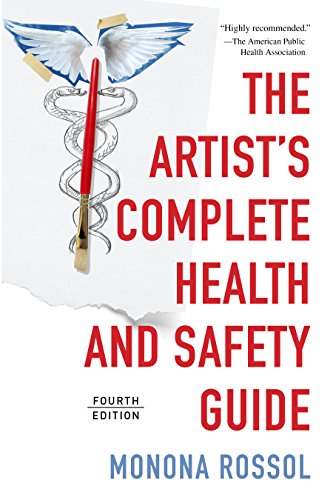Art Studio Health & Safety
Art Studio Environmental Health and Safety Procedures
Health & Safety in the Art Studios
This guide acts as a vital resource for students, staff, and faculty within the Department of Art at Western Connecticut State University. It is essential that all students participate in in-class training sessions, which are designed to provide crucial information before they begin using various chemicals, tools, or machinery in the studios.
The details contained within this guide assess potential hazards associated with different materials and processes, while also outlining recommended safety precautions to mitigate these risks. As artists, we engage with a wide array of materials, tools, and studio environments that carry inherent hazards, including chemical exposure, mechanical injuries, fire hazards, and electrical risks.
Follow links here for information pertaining to specific health and safety hazards for each studio discipline: Ceramics, Painting and Drawing, Photography, Sculpture and be sure to check out the Personal Protective Equipment (PPE) Assesment Link below.
 It is our personal responsibility to become familiar with these potential dangers and to implement the necessary precautions. By doing so, we can safeguard not only our own health and well-being but also that of our fellow peers in the creative community. Prioritizing safety in our artistic practices ensures a productive and secure environment for everyone.
It is our personal responsibility to become familiar with these potential dangers and to implement the necessary precautions. By doing so, we can safeguard not only our own health and well-being but also that of our fellow peers in the creative community. Prioritizing safety in our artistic practices ensures a productive and secure environment for everyone.
Students are strongly encouraged to consult the Safety Data Sheets (SDS), which contain essential information regarding the potential hazards associated with various chemicals, as well as guidelines for their safe handling and usage. These documents play a vital role in maintaining safe and healthy studio work environments. By familiarizing themselves with the SDS, students can better understand the risks involved and take appropriate precautions to ensure their safety and the safety of those around them. (Please see the SDS link provided below.)
Additionally, students are advised to supplement the information obtained in class by utilizing other resources. For example, a great reference to consider is "The Artist's Complete Health and Safety Guide" by Monona Rossol, which is available in paperback or on Kindle.
Environmental Health and Safety
The Department of Art works closely with the Environmental Health & Safety (EHS) division at Western Connecticut State University. EHS helps the entire institution by supporting and promoting safe and healthy work practices in labs, classrooms and art studios. They provide a wide variety of services including administration of life safety, fire notification and protection systems, management of hazardous materials and waste, evaluation of ergonomic inquiries, assessment of indoor air quality and industrial hygiene concerns and design and delivery of EHS education and training programs. Should you have any questions about working safely in the Department of Art that are not answered in this guide, go to the EMS website or you may contact Mark Schuman, Director of EHS.
Mark Schuman, Director, EHS
University Hall 002
schumanm@wcsu.edu
https://www.wcsu.edu/ehs/
Phone (203) 837-9326
Emergency Procedures
For any emergency that is immediate and life threatening call 911. This includes: fire, explosion, shop accidents, chemical exposure, or disaster. Injuries requiring medical attention should be called in to WCSU Police at 203-837-9300 for escort to the hospital. An emergency telephone is located in the sculpture studio and on each floor of the Art Wing. Police will assess the situation and arrange for transport to a medical facility. DO NOT TRANSPORT INJURY VICTIMS! Minor injuries can be treated with standard first aid at the discretion of the victim. Basic first aid kits are located in each of the studios and in the Department of Art Main Office (VPA 143)

